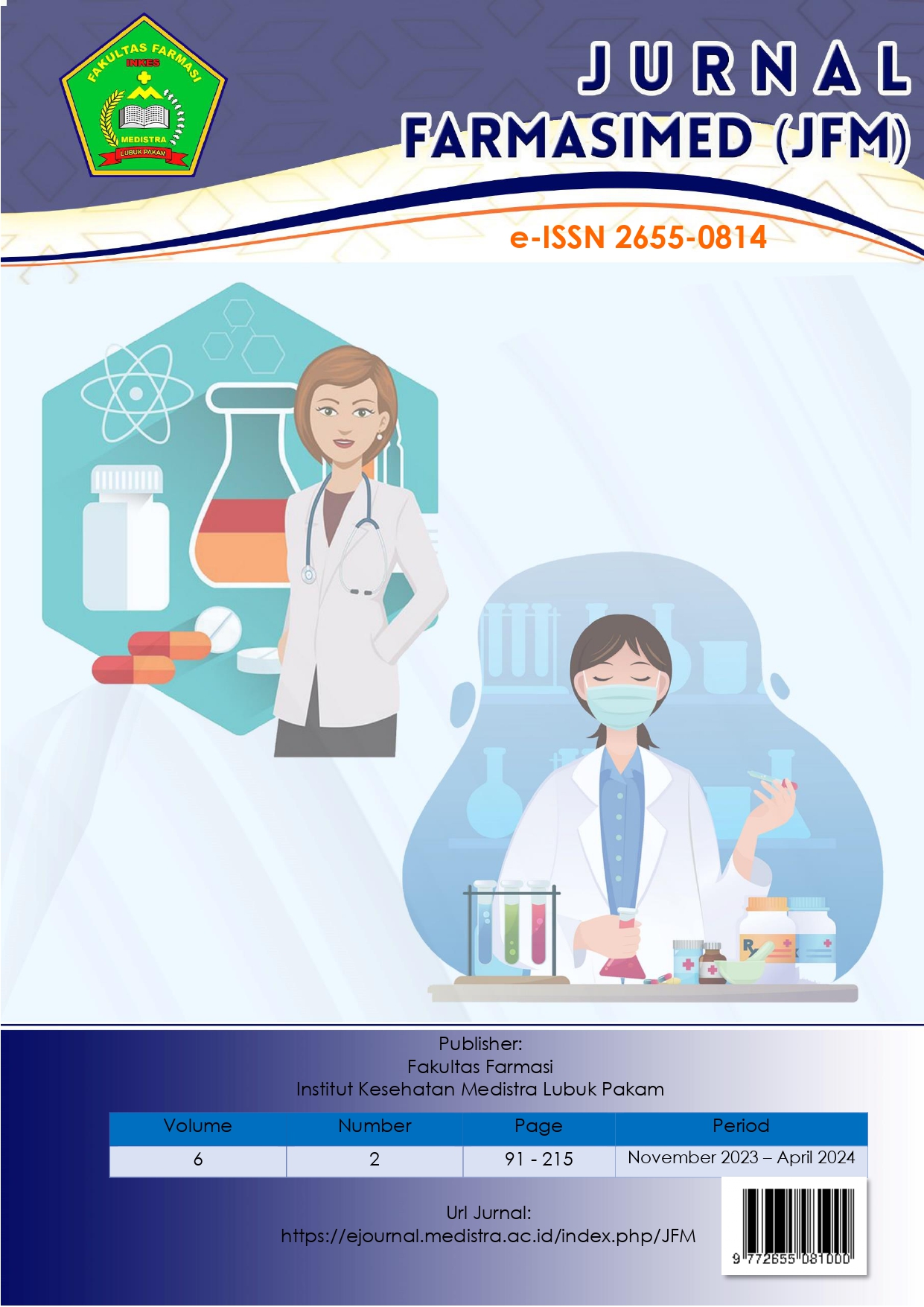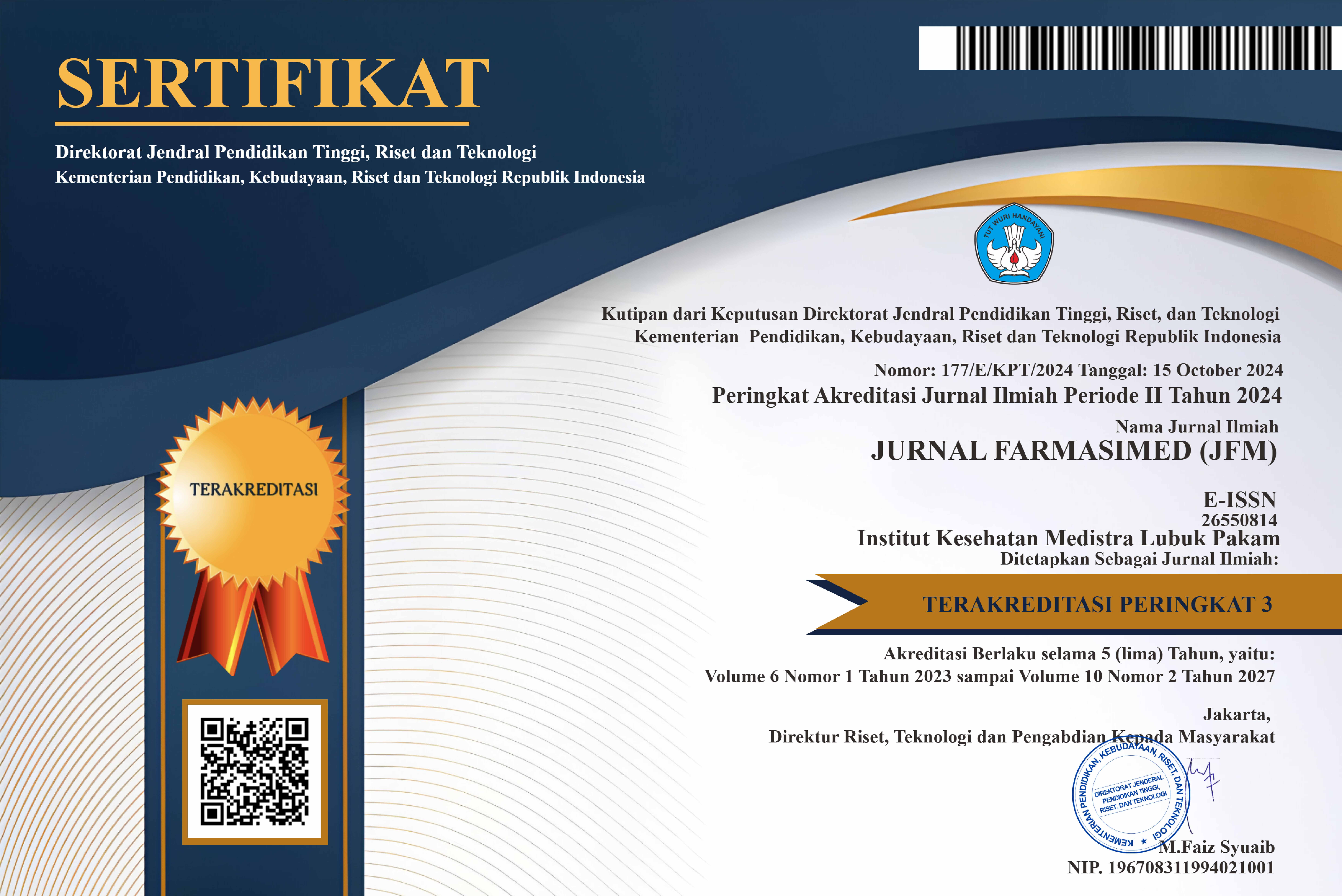Study on the Effectiveness of Thrombolytic Drugs in Emergency Treatment of Ischemic Stroke: Time and Outcome Analysis
DOI:
https://doi.org/10.35451/jfm.v6i2.2506Keywords:
Ischemic stroke, thrombolytics, time of administration, effectiveness of therapyAbstract
Ischemic stroke is one of the leading causes of morbidity and mortality worldwide. Thrombolytic therapy, such as the use of alteplase (tPA), is an effective standard of care when given in a timely manner. However, its effectiveness in clinical practice still varies, especially related to factors such as the time of drug administration and patient clinical outcomes. This study aims to analyze the effectiveness of thrombolytic drugs in ischemic stroke emergencies based on the relationship between the time of drug administration and patient clinical outcomes, using univariate and bivariate analysis. This study used an observational analytical design with a retrospective approach. Data on ischemic stroke patients who received thrombolytic therapy were collected from medical records at the hospital during a certain period. The independent variables included onset-to-needle (OTN) time and door-to-needle (DTN) time, while the dependent variable was clinical outcome based on the National Institutes of Health Stroke Scale (NIHSS) and modified Rankin Scale (mRS). Univariate analysis was used to describe the distribution of patient characteristics and main variables, while bivariate analysis was performed with correlation and logistic regression tests to see the relationship between the time of drug administration and patient outcomes. The results of univariate analysis showed that the majority of patients (70%) received thrombolysis within the OTN time range <3 hours, with an average initial NIHSS value of 12.5 ± 4.3. From the bivariate analysis, a significant relationship was found between DTN time <60 minutes and improvement in NIHSS score after 24 hours (p <0.05). In addition, patients with mRS <2 at 90 days after therapy were more common in the group receiving thrombolytics faster (OTN <3 hours) than those who received slower (p <0.01).
Downloads
References
Koellhoffer EC, Mccollough LD. 2013. The effects of estrogen in ischemic stroke. Translational Stroke Research 4(4):390-401. https://doi.org/10.1007/ s12975-012-0230-5.
Ni Weiyi, Kunz W, Goyal M, Ng Yu, Tan K, De Silva D. 2020. Lifetime quality of life and cost consequences of delay in endovascular treatment for acute ischemic stroke: a cost effectiveness analysis from a Singapore healthcare perspective. BMJ Open 10(9): 1–8. https://doi.org/10.1136/ bmjopen-2019-036517.
Maharani, A. (2022). Evaluasi Kuantitaif Penggunaan Obat Kardiovaskular di Instalasi Rawat Inap RSJ Prof. Dr. Soerojo Magelang Tahun 2021 (Doctoral dissertation, Universitas Islam Indonesia).
Michel P, Lindsay P, Martins S, Pandian JD, Caso V, Kim JS, Bryer A, Anderson C, Feigin V, Sandercock P, et al. 2019. Alteplase (recombinant tissue Plasminogen Activator, rt-PA) for the treatment of acute ischemic stroke: Application for inclusion of a new individual medicine in the WHO model list of essential medicines (EML). Switzerland.
Purwandityo, A. G., Ikawati, Z., & Pinzon, R. T. Narrative Review: Efektivitas Sitikolin vs Asam Folat dalam Menurunkan Disabilitas Neurologis Pasien Stroke Iskemik Akut. Majalah Farmaseutik, 20(1), 55-62.
Rha J, Saver JL, 2007. The Impact of Recanalization on Ischemic Stroke Outcome: A meta analysis. Stroke 35(3):967-973. https://doi. org/10.1161/01.STR.0000258112.14918.24.
Riset Kesehatan Dasar. 2018. Kementrian Kesehatan Republik Indonesia: Badan Penelitian dan Pengembangan Kesehatan.
Robinso TG, Wang X, Arima H, Bath PM, Billot L, Broderick JP, Demchuk AM, Donnan GA, Kim JS, Lavados PM, et al. 2019. Low- versus standard-dose alteplase in patients on prior antiplatelet therapy the enchanted trial (enhanced control of hypertension and thrombolysis stroke study). Stroke 48(7): 1877-1883. https://doi. org/10.1161/STROKEAHA.116.016274).
Utomo, T. Y. (2022). Karakteristik Faktor Risiko Stroke Hemoragik dan Stroke Non Hemoragik di RSUD Kota Bekasi. Syntax Literate: Jurnal Ilmiah Indonesia, 7(9), 2548-1398.
Widiani, G.A., & Yasa, I.M.M. 2023. Korelasi Tingkat Pengetahuan Terhadap Kemampuan Deteksi Dini Gejala Stroke Dengan Sikap Keluarga Terhadap Penanganan Pre Hopsital. Widyaningsih, D. A. D., & Herawati, I. (2022). Peran fisioterapi dalam meningkatkan kemampuan fungsional pada kasus post stroke hemiparrese dextra E. C non hemoragik. Journal of Innovation Research and Knowledge, 2(3), 797–804. https://www.bajangjournal.com/index.php/JIRK/article/view/3140
Widiani, G.A., & Yasa, I.M.M. 2023. Korelasi Tingkat Pengetahuan Terhadap Kemampuan Deteksi Dini Gejala Stroke Dengan Sikap Keluarga Terhadap Penanganan Pre Hopsital.
World Stroke Organization. 2022. Global stroke fact sheet 2022. Journal Stroke 17(1):18-29. https://doi.org/10.1177/17474930211065917.
Downloads
Published
Issue
Section
License
Copyright (c) 2024 indra tarigan

This work is licensed under a Creative Commons Attribution-NoDerivatives 4.0 International License.
Copyright in each article is the property of the Author.

























